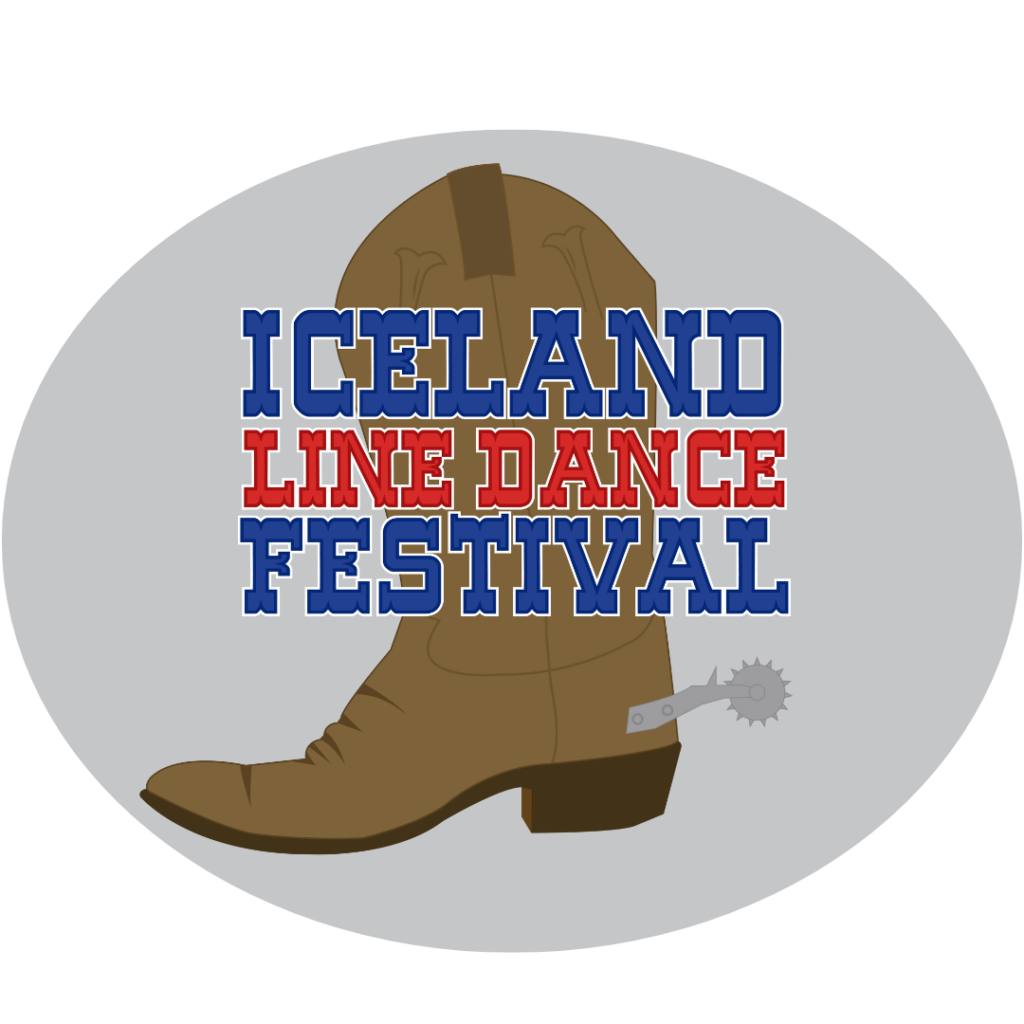The History of Line Dancing
May 17, 2024
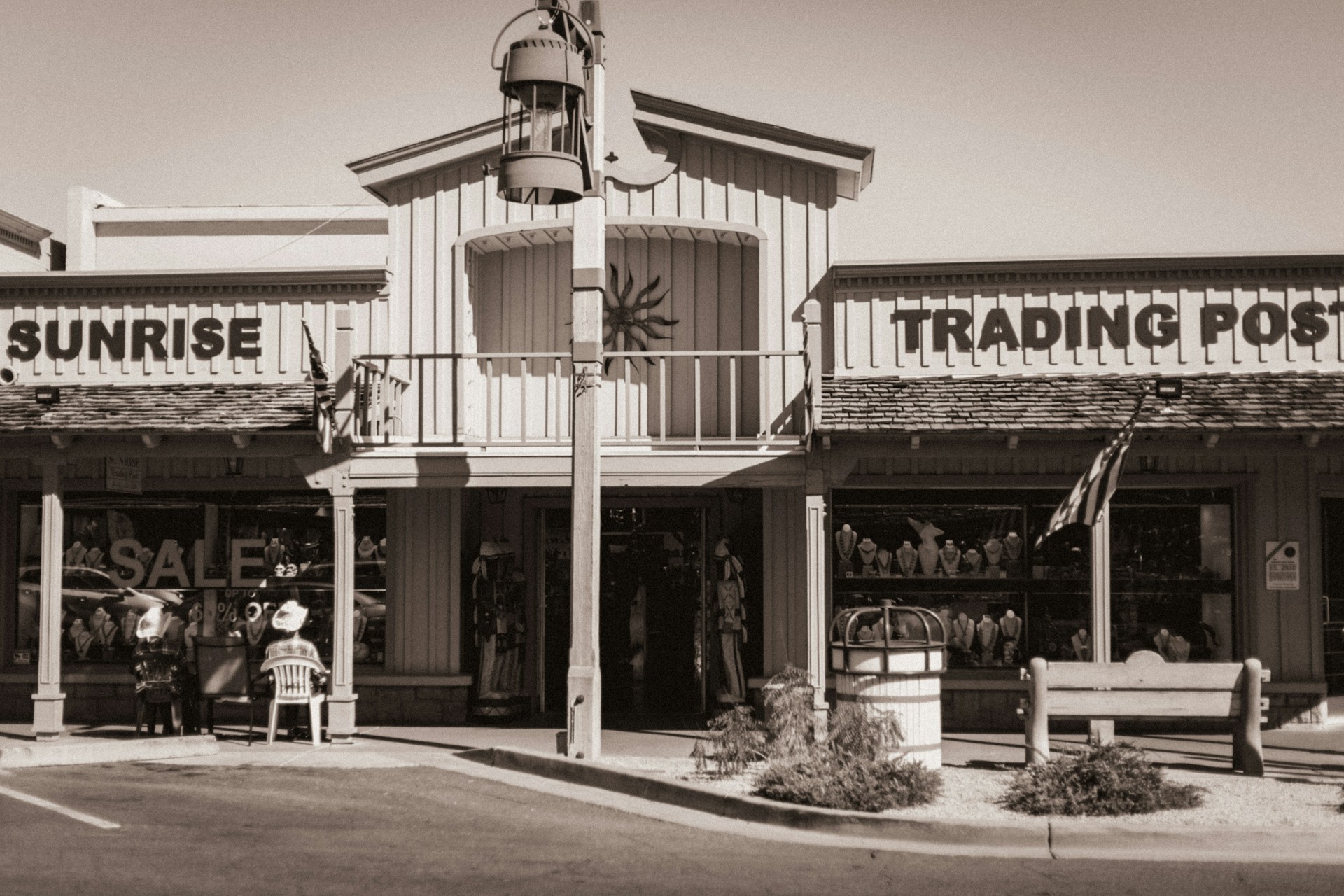
Line dancing, a captivating and enduring dance form, has evolved over centuries, capturing the hearts of dance enthusiasts worldwide. Rooted in both social and cultural traditions, line dancing’s journey from its early beginnings to its modern-day popularity is a fascinating story.
The History of Line Dancing: Early Beginnings
Line dancing traces its origins back to folk dancing traditions that have been a part of human culture for centuries. These early forms of group dances were prevalent in Europe and brought to America by settlers. One of the earliest influences on line dancing was the contra dance, a form of folk dance where couples faced each other in lines. Contra dancing, with its structured steps and coordinated movements, laid the groundwork for what would eventually become line dancing.
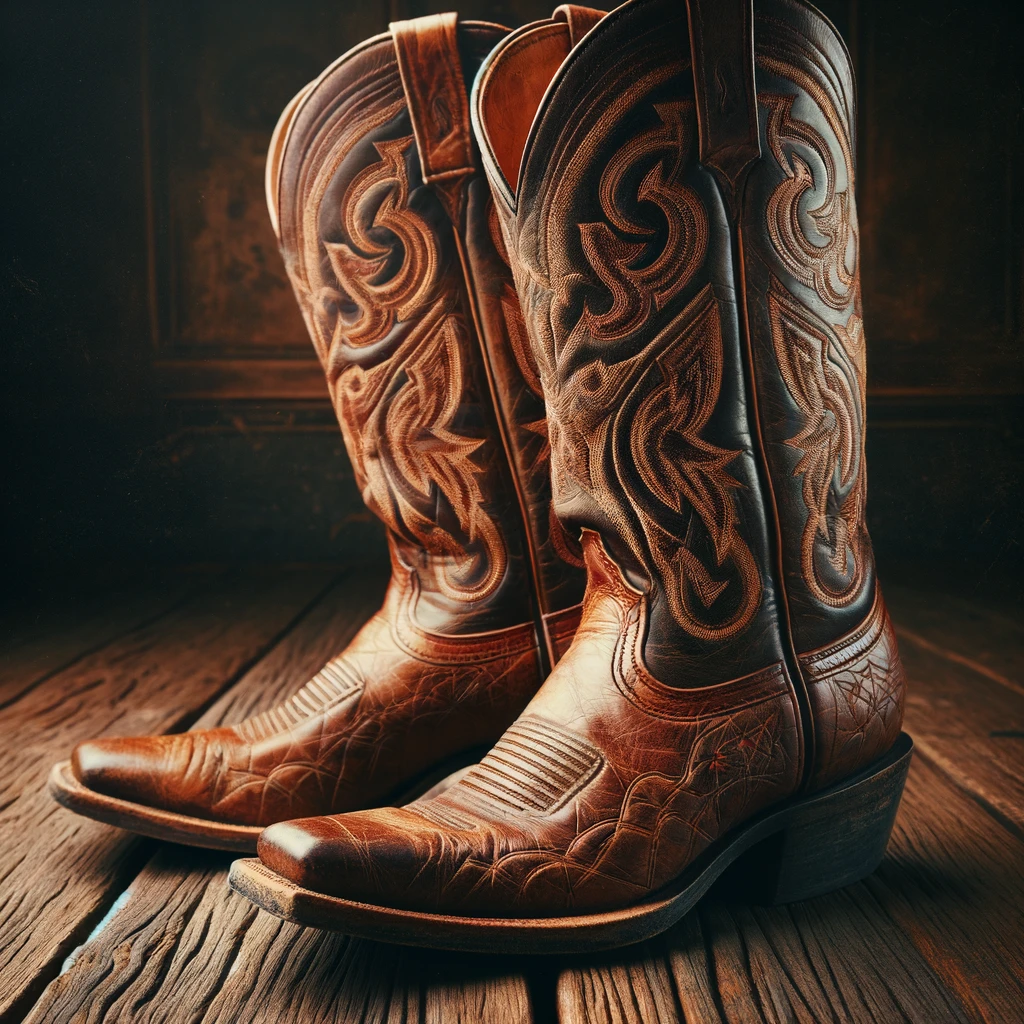
The Rise of Western Influence
In the United States, the popularity of line dancing began to surge in the 19th and early 20th centuries. The Western cowboy culture played a significant role in this evolution. Cowboys and settlers in the American West adopted and adapted various folk dances to create their unique styles. The communal and social nature of these dances made them perfect for gatherings at barns, saloons, and community events. These gatherings often featured live music, with the fiddle and banjo being popular instruments that set the rhythm for dancers.
The 1950s to 1970s: Country Music and Dance Halls
The mid-20th century marked a pivotal era for line dancing, particularly with the rise of country music. Artists like Hank Williams and Patsy Cline became household names, and their music provided the perfect backdrop for dancing. Dance halls and honky-tonks became the epicenters of social life in rural America, where line dancing flourished. During this period, choreographed dance routines began to emerge, with specific steps and sequences becoming standardized.
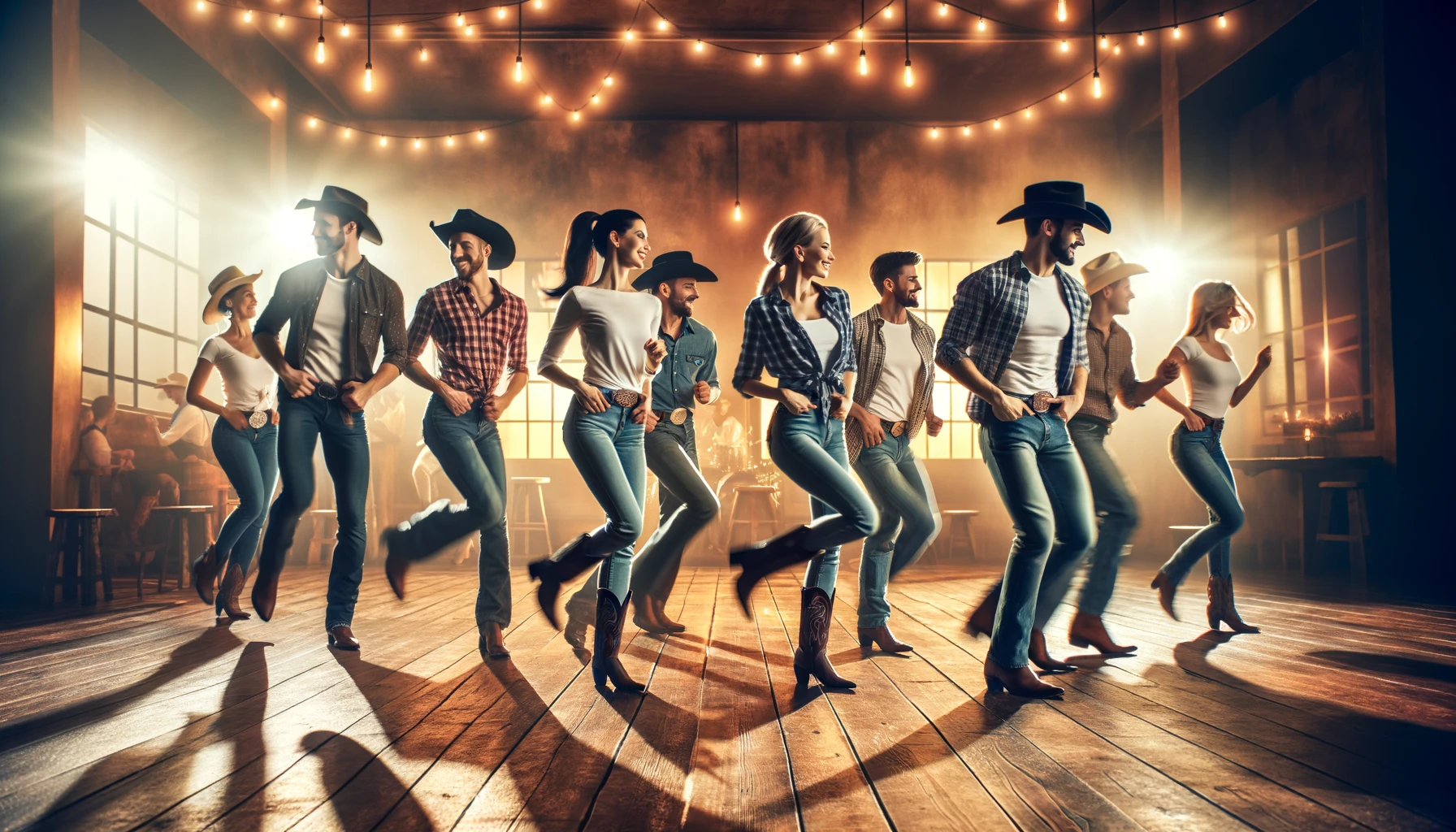
The Urban Cowboy Era
The late 1970s and early 1980s saw a significant boost in the popularity of line dancing, thanks in part to the film “Urban Cowboy” (1980), starring John Travolta. The movie showcased the vibrant dance scenes at Gilley’s Club in Houston, Texas, and introduced line dancing to a broader audience. This period also saw the emergence of iconic line dances such as the “Boot Scootin’ Boogie” and the “Electric Slide,” which became staples at dance clubs across the country.
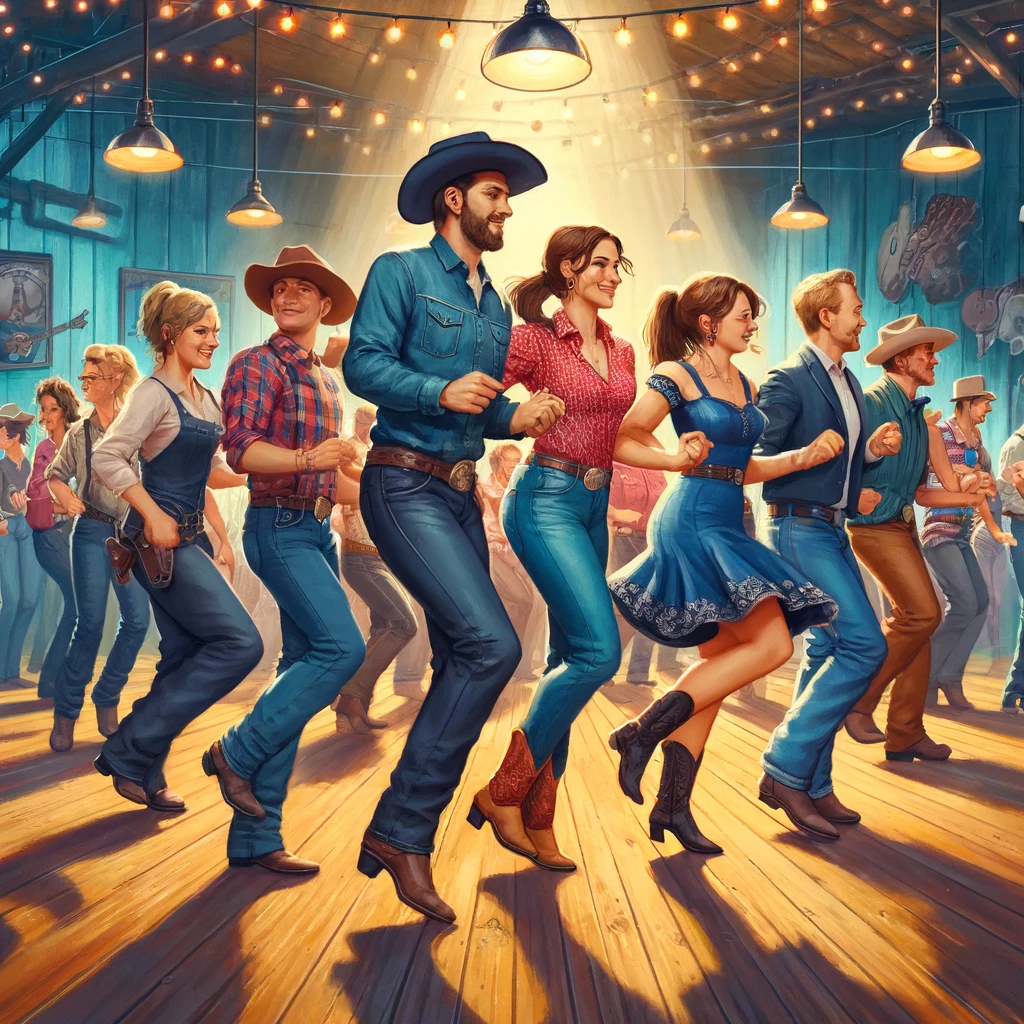
The 1990s Boom and Beyond
The 1990s were a golden age for line dancing, with the genre reaching new heights of popularity. Country music artists like Billy Ray Cyrus, whose hit “Achy Breaky Heart” (1992) sparked a line dancing craze, played a crucial role in this boom. Line dancing wasn’t limited to country music alone; it also embraced other genres, including pop and rock, making it accessible to a wider audience.
During this time, line dance clubs and classes proliferated, and international line dancing competitions were established, highlighting the dance’s global appeal. The internet and social media further fueled its growth, allowing enthusiasts to share new routines and styles with a worldwide audience.
Modern Line Dancing
Today, line dancing remains a vibrant and dynamic form of expression. While its roots are deeply embedded in country and Western traditions, modern line dancing has evolved to include a diverse range of music genres and dance styles. From traditional country music to contemporary pop and hip-hop, line dancing continues to adapt and thrive.
Community events, weddings, and social gatherings often feature line dancing as a way to bring people together in a fun and inclusive environment. The dance’s structured yet flexible nature allows participants of all ages and skill levels to join in and enjoy the experience.
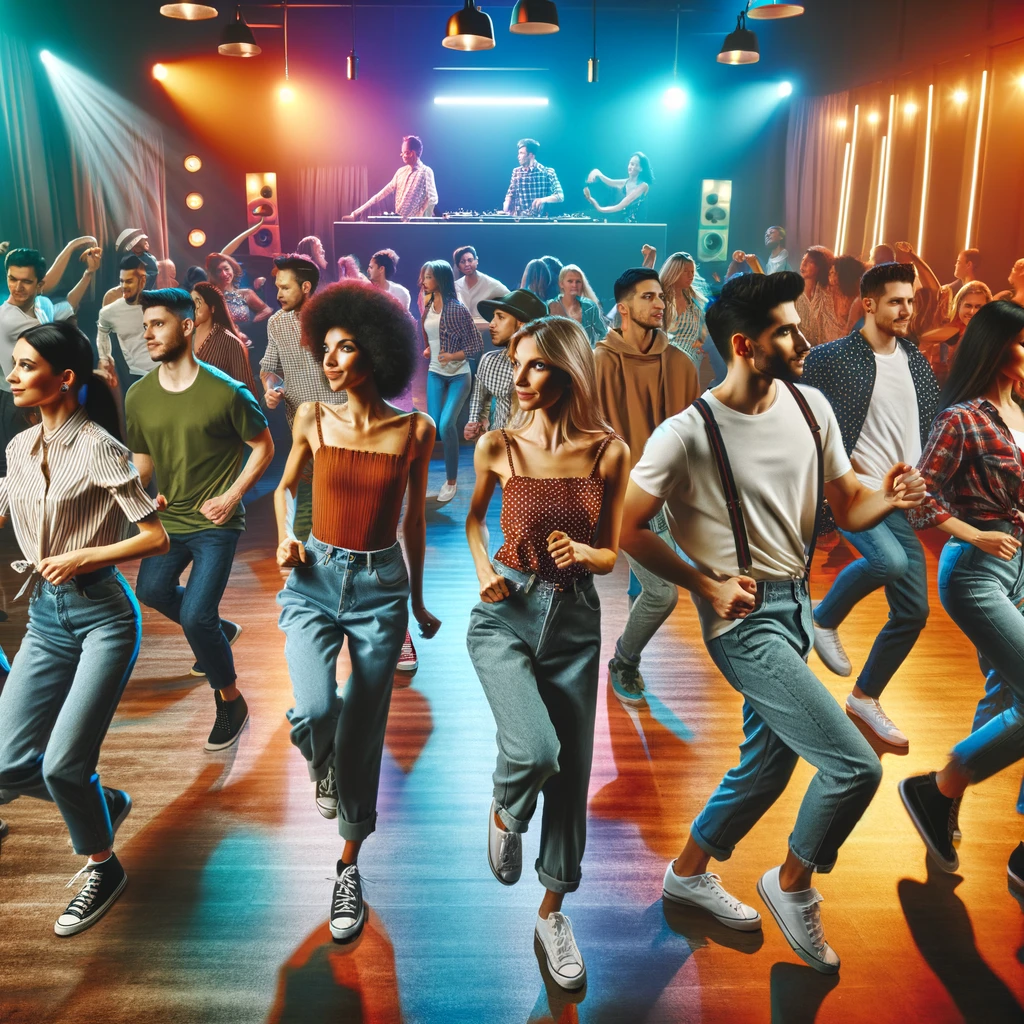
Conclusion
Line dancing’s rich history reflects its enduring appeal and adaptability. From its humble beginnings in folk traditions to its widespread popularity in contemporary culture, line dancing has woven itself into the fabric of social life. Whether in a rustic dance hall or a modern urban setting, line dancing continues to bring joy and unity to people around the world, proving that the simple act of dancing in a line can create lasting connections and cherished memories.
